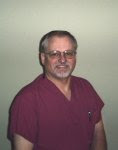Tuesday, June 28, 2011
July Office Hours
July Hours: The office will close Saturday July 2nd and Monday July 4th for the Holidays. We will be back to Normal Hours on Tuesday. If you have an emergency call 911 or go to the emergency room.
Wednesday, June 1, 2011
June Blog and Health News
June Office Hours:

What is it?
Tennis elbow is referred to medically as lateral epicondylitis, suggesting an inflammation of the extensor tendons of the forearm. Studies suggest that chronic cases actually display degenerative changes in the tendon suggesting tendinosis instead of the inflammatory tendinitis. The point of pain is at the outside of the elbow.
How do I know I have it? (Signs and symptoms)
How do I get Tennis Elbow?
General:
- I will be open all day on Thursday June 9 and closed at noon on Friday June 10 to leave town for a seminar.
Clinical Topic of The Month-Tennis Elbow
Tennis elbow is referred to medically as lateral epicondylitis, suggesting an inflammation of the extensor tendons of the forearm. Studies suggest that chronic cases actually display degenerative changes in the tendon suggesting tendinosis instead of the inflammatory tendinitis. The point of pain is at the outside of the elbow.
How do I know I have it? (Signs and symptoms)
- Pain on the outer part of elbow (lateral epicondyle).
- Pain with gripping or squeezing, wrist extension and lifting movements. Firm handshakes when squeezed can hurt.
- Painful with any activities extending the wrist.
- Grip weakness and pain with any activities gripping-turning a door knob, shaking hands, holding a heavy glass of water, turning a screw driver, etc..
How do I get Tennis Elbow?
- Forceful blows or extension were thought to be early culprits suggesting tears at the tendons insertion into the bone.
- There may be alternation of the radial nerve in the area.
- Breakdown of the tendon due to overuse stress.
- Rest or back down the activity causing it.
- Maintain physical conditioning.
- Use appropriate equipment.
- Learn appropriate form.
- Use a tennis elbow strap to help diffuse shearing forces.
- Orthopedic testing (Cozen's).
- Medical imaging tests-x-ray, MRI, ultrasound (usually cost prohibitive)
- Generally made with signs and symptoms
- Manipulation (Mill's maneuver)
- Physical modalities-Ultrasound, electrical stim, ice, heat, vibration, laser therapy, exercises and stretching
- Deep tissue therapy (transverse friction massage, Graston or other instrument assisted soft tissue mobilization)
- Rest
- Anti-inlammatory medications (OTC or prescription)
- Bracing
- Medical interventions-surgery, botulism, cortisone injections
Health Snippets
Heart Attack Symptoms:General:
- Pain or pressure in the chest.
- Discomfort spreading to the back, jaw, throat, or arm.
- Nausea, indigestion, or heartburn.
- Weakness, anxiety, or shortness of breath.
- Rapid or irregular heartbeatsWomen:
Subscribe to:
Posts (Atom)



